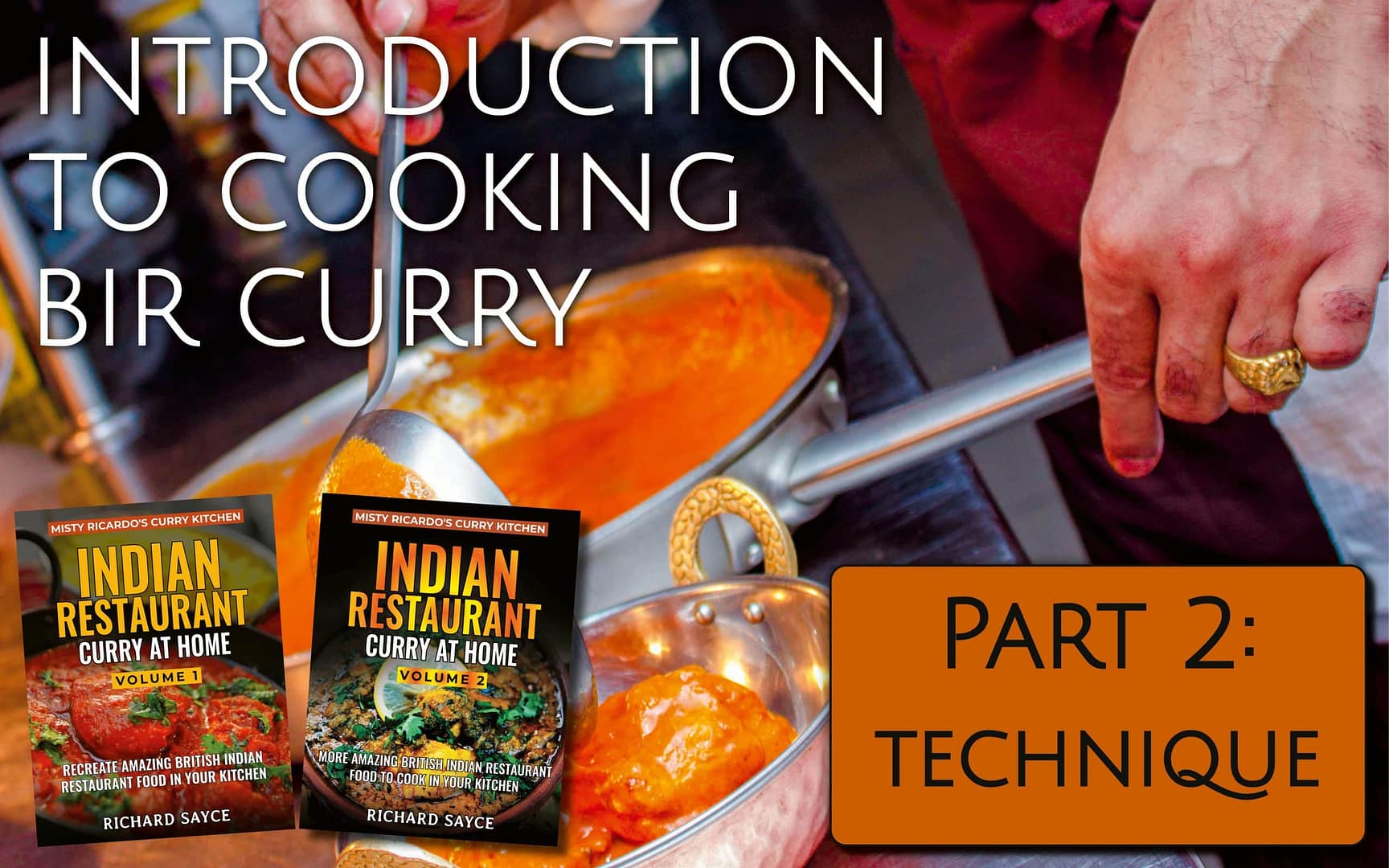Typical Stages of Restaurant Style Curry Cooking
To demonstrate and illustrate the typical steps taken to make a BIR style curry, I’m going to demonstrate the making of a basic curry sauce using the most common ingredients. This article will explain the key techniques to getting a great flavour when cooking at home on a standard hob.
The curry sauce ingredients (with no emphasis placed on the quantities or brands in this section) are oil, cumin seeds, chopped onion, ginger/garlic paste, kasuri methi, mix powder, chilli powder, salt, base gravy, tomato paste, fresh coriander, and fresh tomato segments
The stages of cooking my basic curry sauce recipe are shown below. Note that different curries will of course have their own selection and quantity of ingredients, and have differing stages. For example, whole spices are not always used in my curry recipes; nor are chopped onions.
There is an accompanying video to this article: please read below.
Watch the Video
- Oil or ghee (usually 3-4 tablespoons) is added to a frying pan on medium high heat.
- When the oil is hot, some cumin seeds (or other whole spices) are fried in the oil for a short while to infuse flavour.
- Chopped onion is then added and fried until soft and starting to brown very slightly. The onion is for extra flavour as well as for body and texture.
- A teaspoon or two of ginger/garlic paste goes in, and is fried for a short while to cook out the raw taste. Care is taken to not let the paste stick to the pan and start burning.
- Now the powdered spices and similar are added. In this recipe, mix powder, chilli powder, kasuri methi and salt are used, which are all common ingredients in BIR curry cooking.
- The spices are fried to release their essential oils and lose their harsh, raw taste. It’s important to fry them enough for optimal flavour.
- The powders will quickly start to stick to the surface of the frying pan. When that happens, a splash of base gravy is added to deglaze the pan and prevent burning.
- After about 25 seconds the tomato paste is stirred in and then fried for a little while longer to bring out the best flavour of the tomato. If we were using a pre-cooked ingredient such as chicken or lamb, it would be added now.
- Now it’s time to start adding hot base gravy. Initially a small amount (75ml) is poured from a ladle and stirred in. It’s left for a while to reduce and caramelise.
- After leaving it to fry for a short while (30-60 seconds depending on the heat source), you should notice some signs that the curry is progressing nicely.
- Now the sauce is nicely reduced and caramelised, we can afford to add a larger amount of base gravy before stirring and scraping it all together.
- The curry is then left to cook for a while without stirring. It will take another 3-4 minutes until the curry sauce is finished. During this time I’ve added some tomato segments to demonstrate how some ingredients are best added towards the end of cooking (tomatoes cook and go mushy quickly).
- The curry benefits from not being fiddled with unnecessarily, but there sometimes comes a time when it needs a stir and a scrape to prevent it burning. It’s difficult to define when that is imminent, and from experience I know how tempting it is to tamper. Resist that urge! It’s better to burn a few curries when practising so that you can learn how far you can push things. A general observation: you are entering the danger zone when things go quiet in the pan and there are no puffs of steam escaping, so act quickly.
- When you stir and scrape the curry together, a good sign that the sauce has been caramelising nicely is the thick caramelised frond on the edge of your spoon.
- To end up with the right sauce consistency (in this case I wanted it medium thick), extra base gravy is added a short time before the end. It depends entirely on the curry being cooked and the cook’s preference. Fresh coriander is also sometimes mixed into curries just before the end for a fresh taste.
- Done. There are different approaches to making BIR curry at home, and many experienced cooks have their own ways. I’m not professing that my methods are better, but simply sharing my knowledge of what I know works best for me.
For more detailed information on these cooking techniques please see my first book, Indian Restaurant Curry at Home Volume 1.











0 Comments